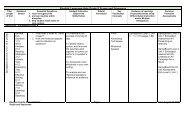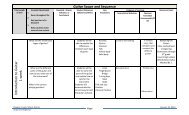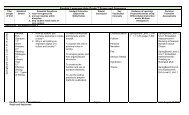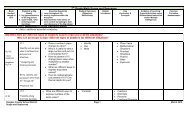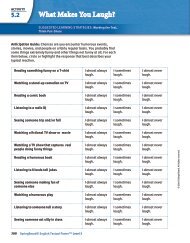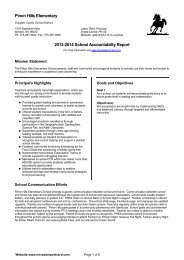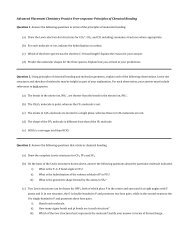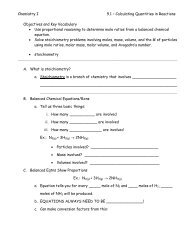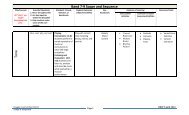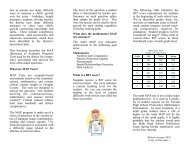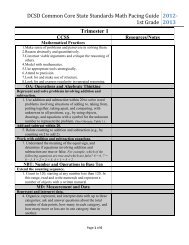DCSD Common Core State Standards Math Pacing Guide 4th Grade
DCSD Common Core State Standards Math Pacing Guide 4th Grade
DCSD Common Core State Standards Math Pacing Guide 4th Grade
You also want an ePaper? Increase the reach of your titles
YUMPU automatically turns print PDFs into web optimized ePapers that Google loves.
<strong>DCSD</strong> <strong>Common</strong> <strong>Core</strong> <strong>State</strong> <strong>Standards</strong> <strong>Math</strong> <strong>Pacing</strong> <strong>Guide</strong> <strong>4th</strong><br />
<strong>Grade</strong><br />
2012-<br />
2013<br />
NF: Number and Operations—Fractions<br />
(<strong>Grade</strong> 4 expectations in this domain are limited to fractions with denominators 2, 3,<br />
4, 5, 6, 8, 10, 12, and 100.)<br />
Extend understanding of fraction equivalence and ordering.<br />
1. Explain why a fraction a/b is equivalent to a fraction (n × a)/(n ×<br />
b) by using visual fraction models, with attention to how the<br />
number and size of the parts differ even though the two fractions<br />
themselves are the same size. Use this principle to recognize and<br />
generate equivalent fractions.<br />
2. Compare two fractions with different numerators and different<br />
denominators, e.g., by creating common denominators or<br />
numerators, or by comparing to a benchmark fraction such as 1/2.<br />
Recognize that comparisons are valid only when the two fractions<br />
refer to the same whole. Record the results of comparisons with<br />
symbols >, =, or ,=, or



